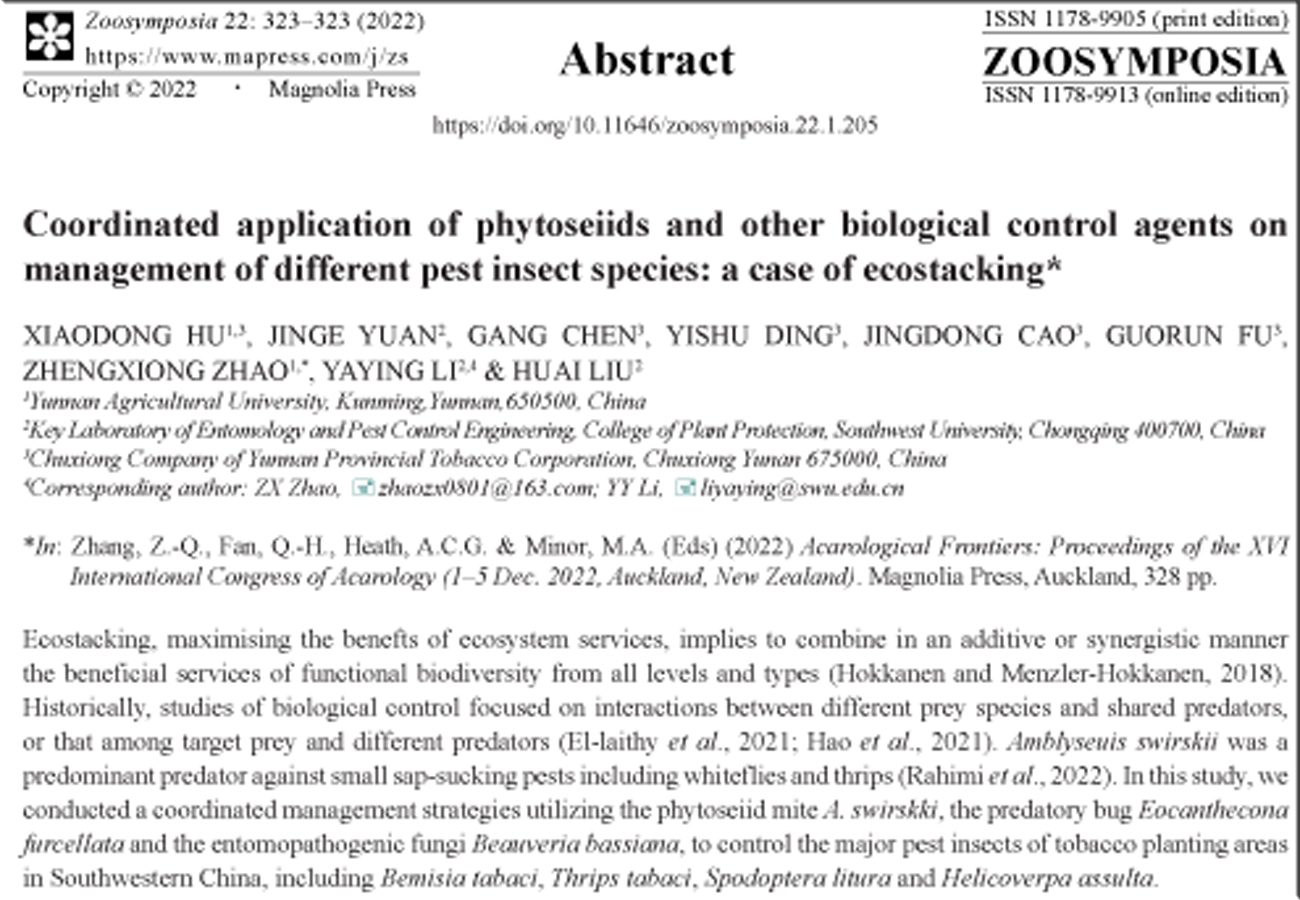Abstract
Ecostacking, maximising the benefts of ecosystem services, implies to combine in an additive or synergistic manner the beneficial services of functional biodiversity from all levels and types (Hokkanen and Menzler-Hokkanen, 2018). Historically, studies of biological control focused on interactions between different prey species and shared predators, or that among target prey and different predators (El-laithy et al., 2021; Hao et al., 2021). Amblyseuis swirskii was a predominant predator against small sap-sucking pests including whiteflies and thrips (Rahimi et al., 2022). In this study, we conducted a coordinated management strategies utilizing the phytoseiid mite A. swirskki, the predatory bug Eocanthecona furcellata and the entomopathogenic fungi Beauveria bassiana, to control the major pest insects of tobacco planting areas in Southwestern China, including Bemisia tabaci, Thrips tabaci, Spodoptera litura and Helicoverpa assulta.
References
El-laithy, A.Y.M., Elseedy, E.M. & Hussein, H.E. (2021) Efficacy of the predatory mite Cydnoseius negevi (Swirskii & Amitai) (Acari: phytoseiidae) as a shared predator for sucking pests on sweet pepper in a net house in Egypt. Systematic and Applied Acarology, 26, 1856–1866. https://doi.org/10.11158/saa.26.10.3
Hao, H.H., Li, P.Z., Xu, T.W., Wu, Q.Q., Zhang, F.P. & Peng, Z.Q. (2021) Preliminary evaluation of the control effect of two predatory mite species on Eotetranychus sexmaculatus in rubber trees in Hainan Province, China. Systematic and Applied Acarology, 26, 2287–2296. https://doi.org/10.11158/saa.26.12.7
Hokkanen, H.M.T. & Menzler-Hokkanen, I. (2018) Developing ecostacking techniques for pollen beetle management in oilseed rape. Arthropod-Plant Interactions, 12, 767–777. https://doi.org/10.1007/s11829-018-9650-9
Rahimi, A., Moradi, F., Sadeghi, A., Fathipour, Y. & Maroufpoor, M. (2022) Impact of constant temperatures on population characteristics of Amblyseuis swirskii (Acari: Phytoseiidae). Systematic and Applied Acarology, 27, 1775–1786. https://doi.org/10.11158/saa.27.9.7

